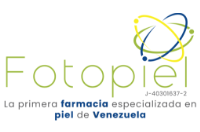EPIDEMIOLOGIA DE LA LEISHMANIASIS TEGUMENTARIA AMERICANA EN EL MUNICIPIO VARGAS 1991-1994
Palabras clave:
Leishmaniasis, Tegumentaria, Leishmaniasis TegumentariaResumen
La Leishmaniasis Americana es una zoonosis (una enfermedad selvática relacionada al hombre y a los animales) encontrada principalmente en las áreas rurales registrándose un incremento de su incidencia en las áreas que rodean las ciudades. El propósito de este estudio es determinar la reincidencia de la leishmaniasis en la población del Municipio Vargas entre 1991 y 1994, y reconocer sus manifestaciones clínicas. Un estudio retrospectivo de 38 casos registrados en el Servicio de Dermatología Sanitaria del Distrito N4 6 del Ministerio de Salud del Municipio Vargas del Distrito Federal, Venezuela, fue hecho con los siguientes resultados: 1) 100% diagnosticado como leishmaniasis cutánea localizada. 2) Una incidencia de 97,67 de casos por año y una rata de 31,46/100.000 habitantes. 3) 60% del sexo masculino. 4) El más alto porcentaje reportado por grupo de edad fue encontrado entre las edades de 15 a 24 (22,63% y 43,36 casos/ 100.000 habitantes). 5) 62,14% tenían úlceras (53,49 en las piernas, 35,81% en los brazos). 6) 90.63 presentaron úlceras en las piernas y brazos. 12.23% en el cuerpo y 5.4% en la cabeza. 7) El_ más alto porcentaje de casos fue encontrado en la población de Naiguatá (20,51 %), La Guaira (19,54%) y Caruao (15,38%). Las ratas fueron de 110, 77,94 de 351 casos de por 100.000 habitantes. 8) En relación al grupo ocupacional el más afectado fue el grupo estudiantil (25,53%), trabajadores (25,53%), amas de casa (20,06%) y campesinos (10,64%).
COCLUSIONES
1) La incidencia de leishmaniasis en el Municipio Vargas, 1991-1994, en uno de los más altos del país. 2) Con excepción de Caruao, las áreas de más alta incidencia están localizadas en varias zonas de sus alrededores, siendo los estudiantes y los trabajadores los más afectados. Del resultado obtenido de este estudio nosotros consideramos necesario intensificar la investigación y reabrir el programa del control de la leishmaniasis en el Municipio Vargas.
ABSTRACT
The American Leishmaniasis of the Tissues (ALT) is a zoonosis (a selvatic animal-human related disease) found mainly in rural areas having been registered in last years a growing incidence in the surrounding areas of the cities. The purpose of this study is to determine the incidente of ALT in the population of the Vargas Municipality between 1991-1994, and to recognize its clinical manifestation. A retroactive study of the 358 cases registered in the Sanitary Dermatology Service of Distric N4 6 of the Health Ministry of the Vargas Municipality, D.F., Venezuela, was made with the followin results: 1) 100% diagnosed as localized cutaneous Leishmaniasis. 2) An incidente of 97,67 cases per year and a rate of 31,46/100.000 inhabitants. 3) 60% belonged to the male sex. 4) The biggest percentage reported by age group was found between the ages of 15 a 24 (22,63% and 43,36 cases/ 100.000 inhabitans). 5) 62,14% had ulcers (53,49 on the legs, 35,81% on the arms). 6) 90.63 presented ulcers on arms and legs. 12.23% on the body and 5.4% on the head. 7) The biggest percentage of cases was found on the Parishes of Naiguata (20,51%), la Guaira (19,54%) and Caruao (15,38%). Their rates were 110, 77,94 of 351 cases of every 100.000 inhabitants. 8) In relation to the occupational group the most most affected were the students (25,53%), workers (25,53%), housewives (20,06%) and farmers (10,64%).
CONCLUSIONS
1) The incidente of ALT in the Vargas Municipality 1991-1994 is one of the highest of the Country. 2) With the exception of Caruao, the areas of biggest incidence are located in the built up zones and its surroundings, being the studentes and workers the most affected groups. From the results obtained on this study, we consider necessary to intensify the investigation and to re-open the Leishmaniasis Control Program of the Vargas Municipality.
Descargas
Número
Sección
Licencia
Publicado por la Sociedad Venezolana de Dermatología Médica, Quirúrgica y Estética







